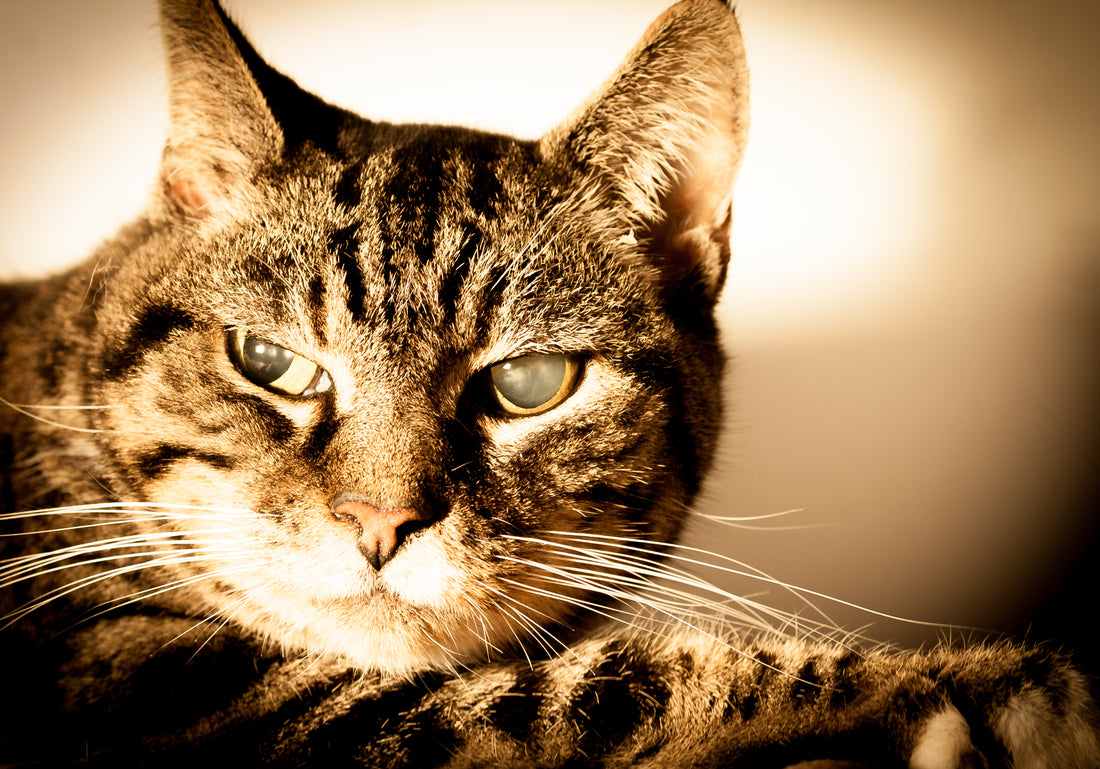
If Your Cat's Eyes are Cloudy, It May Have Cataracts
Cat eyes are universally recognizable. Large and wide, with a slit-like pupil, they are constantly observing their surroundings or staring us down.
Because we see these eyes so often, it is very easy to notice when something doesn’t look quite right with them. One common complaint from cat owners is that their cat’s eyes look cloudy or blueish-white. If you notice this appearance in your cat’s eyes, it might be suffering from cataracts.
Cataracts and your cat’s vision
Before understanding the severity of cataracts, you must understand how your cat’s eyes work. Inside each eye is a lens—a thin, translucent structure—that helps focus light onto the retina. The lens does this by changing its shape to allow light in.
When light hits the retina behind the lens, impulses are sent to the brain via the optic nerve, where visual images are processed, allowing your cat to see. Thus, the lens of the eye plays an extremely important role in the processing of vision.
When a cat develops cataracts, the lens becomes cloudy in one or a few places or is entirely cloudy. The thin, clear lens thickens and becomes more opaque, resulting in a whiteish-gray spot or overall cloudy appearance over the eye. This cloudiness can obstruct vision by preventing light from shining through the lens onto the retina. It is the tell-tale sign of feline cataracts.
Cataracts are a degenerative disorder that will likely continue to get worse; over time, they may result in your cat going blind. The speed at which cataracts will develop ultimately depends on the underlying cause. Cataracts can also affect one or both eyes simultaneously; if both eyes are infected, the rate of degeneration may not be the same in both.
The severity of cataracts and their resulting vision impairment will largely depend on how large of an area is affecting the lens. If only a small area has clouded, your cat will likely be able to see just fine. If the whole lens is cloudy, your cat may not be able to see at all.
Aside from vision problems, cataracts can sometimes be painful or irritating for cats.
Causes of feline cataracts
The root cause of cataracts is not always apparent to cat owners, but identifying the cause may help you stall your cat’s lens degeneration. There are many potential causes of cataracts in cats.
First, cataracts may simply be caused by nature. Some cat breeds are genetically predisposed to developing cataracts, such as Persian cats. Cataracts can also be caused by old age, which is why they are more common in older cats.
Underlying health issues can also play a role in cataract development. An injury to the eye that causes inflammation can cause them, as can a cat’s inability to metabolize proteins and other chemicals properly within the body. They may also be caused by nutritional deficiencies.
Finally, cataracts might be byproducts of conditions like diabetes and feline hypertension (high blood pressure), although these causes are somewhat rare.
While it is worth having a vet examine your cat for cataracts and their underlying causes, in many cases, no root cause is found.
How to tell if your cat has cataracts
The first sign of cataracts that cat owners typically notice is the eye’s cloudy, white or blue appearance. However, your cat may begin displaying behavioral symptoms, as well.
Your cat may have difficulty navigating to the litter box or food, may bump into walls or furniture or may be more cautious when leaping from surfaces or moving around because of a lack of certain version. When this starts to occur, your cat may also display signs of distress, vocalizing, hiding more or becoming aggressive due to the emotional trauma and fear of losing its vision.
If you notice these signs, you should take your cat to the vet right away for an examination. The vet will conduct an eye exam to diagnose cataracts and may also do additional exams to try and identify the underlying cause of the condition. These exams are also important for identifying secondary problems within the eye, such as infections, wounds or inflammation.
The earlier you identify cataracts, the easier it is to stall their development and preserve your cat’s eyesight and comfort.
Is there a cure for cat cataracts?
Unfortunately, there is no definitive cure for cataracts. Eye drops and some medications may be helpful in stalling cataract development and increasing eye comfort. Treatment of the underlying problem, such as diabetes or hypertension, may also slow the progression of cataract development.
If their cataracts are severe, surgery may be necessary for some cats. During this process, an artificial lens is placed to replace the clouded one to restore vision.
If you notice your cat’s eyes are looking cloudier than normal, take it in to the vet and have it checked for cataracts. You may be able to catch the condition before it worsens, giving your cat the chance to retain its vision and live the best life possible.


